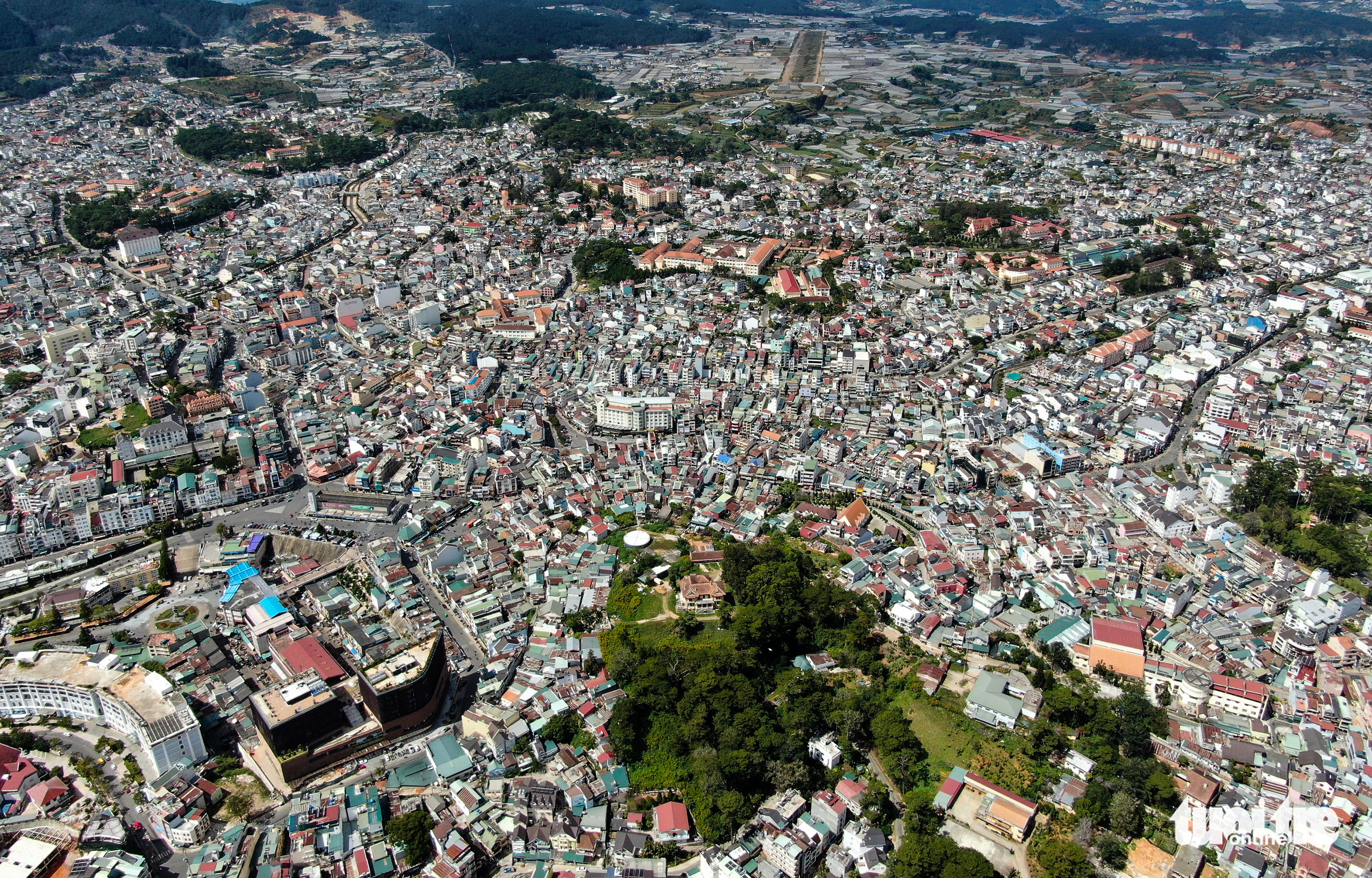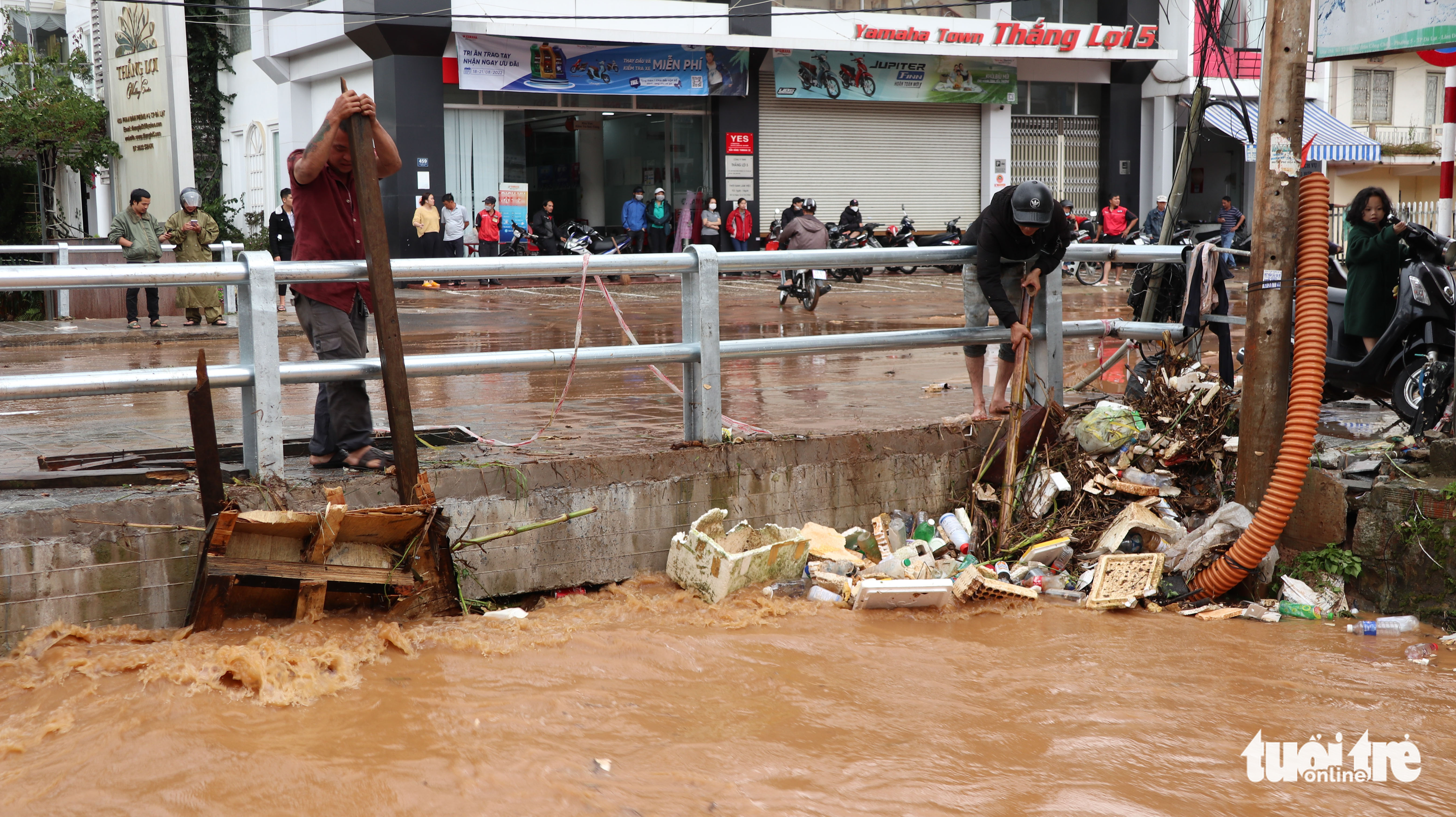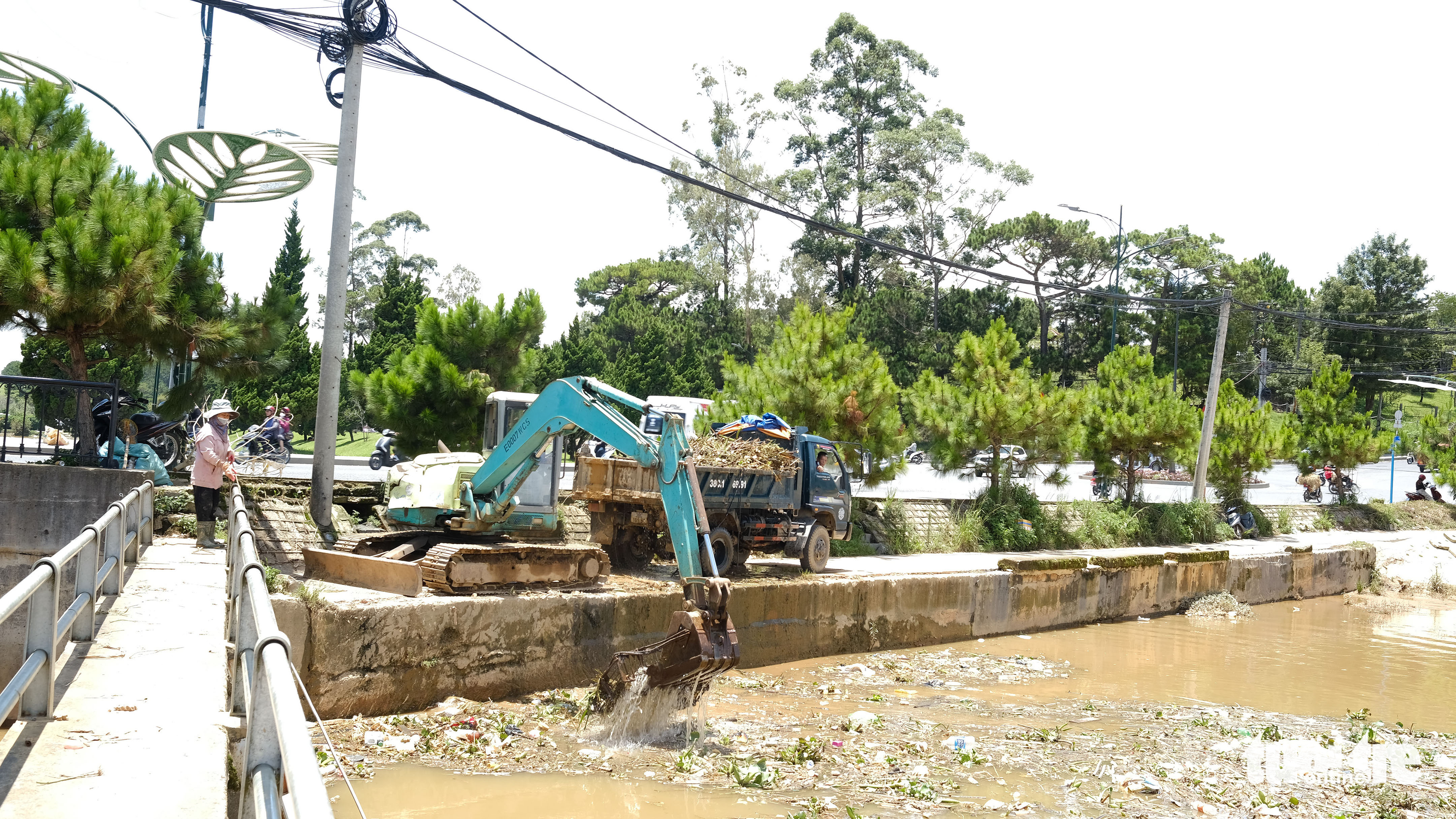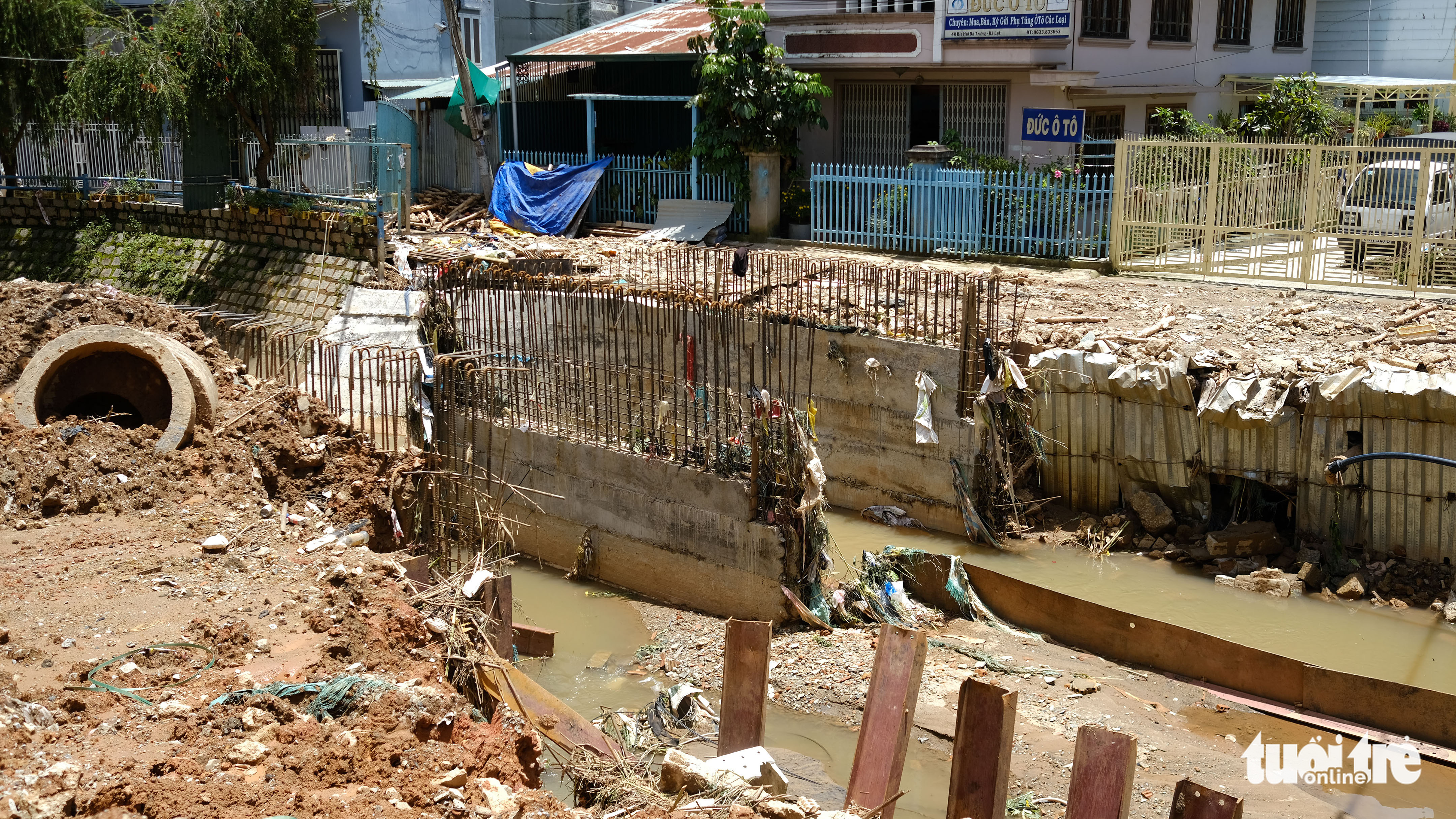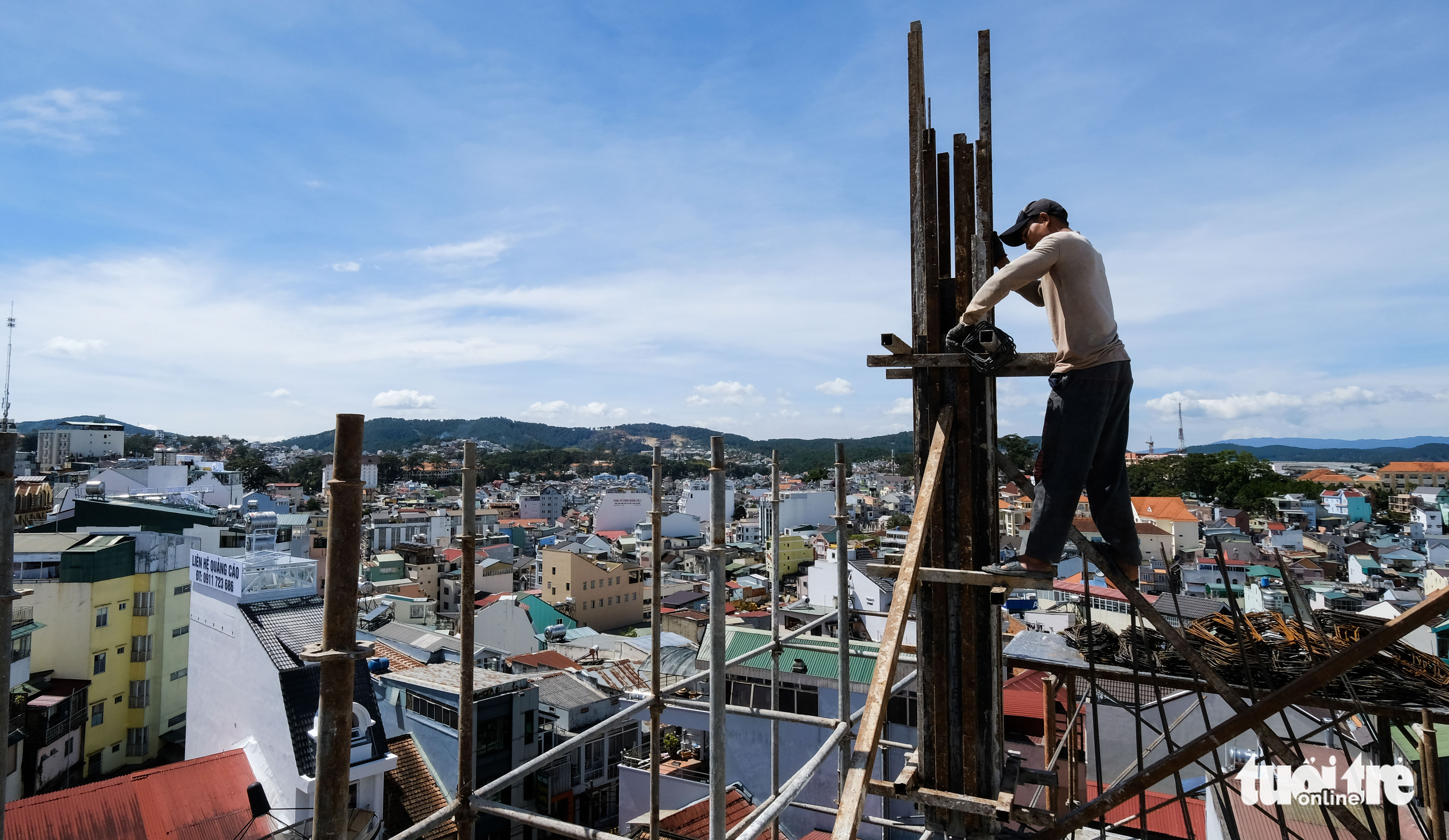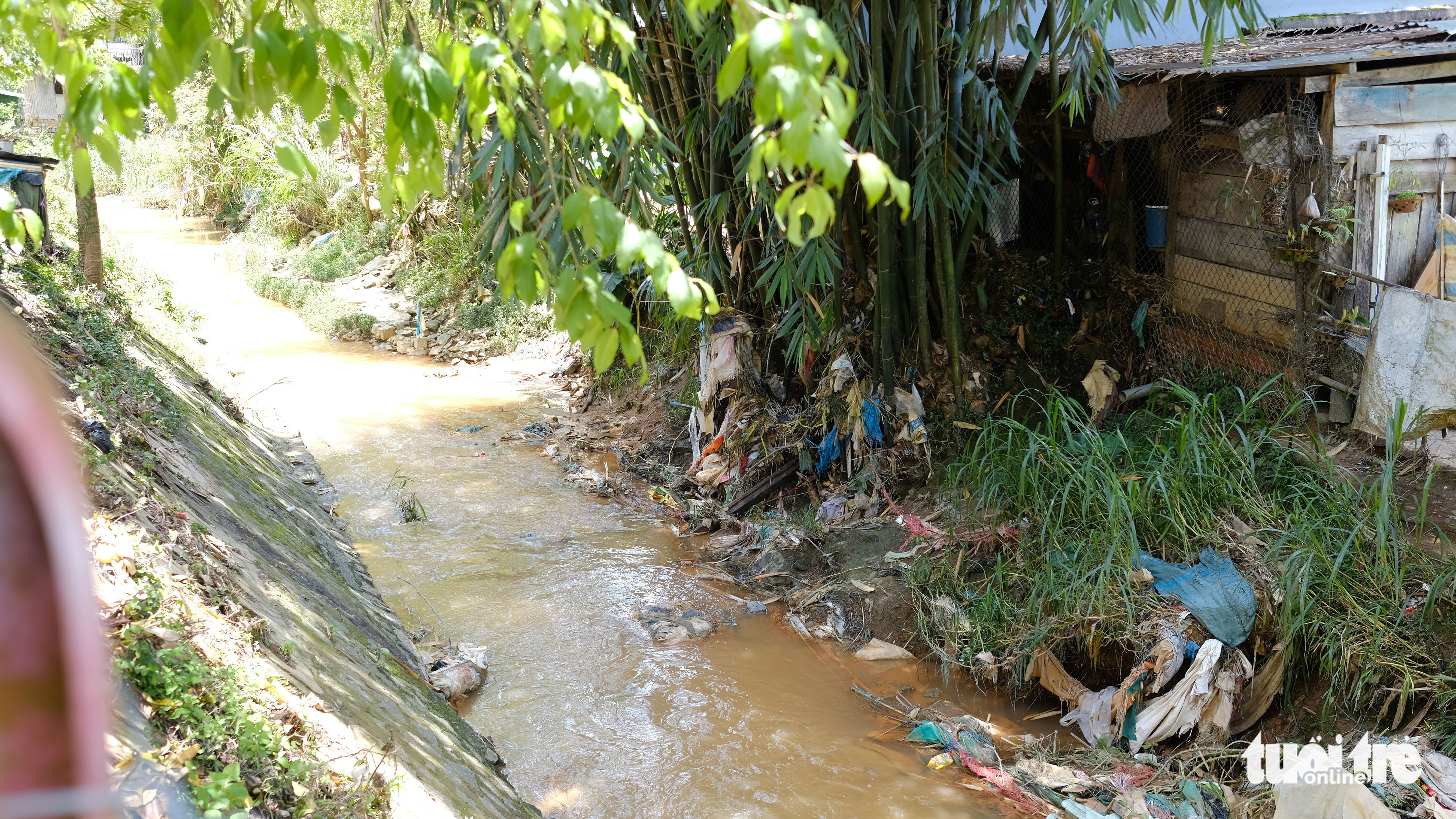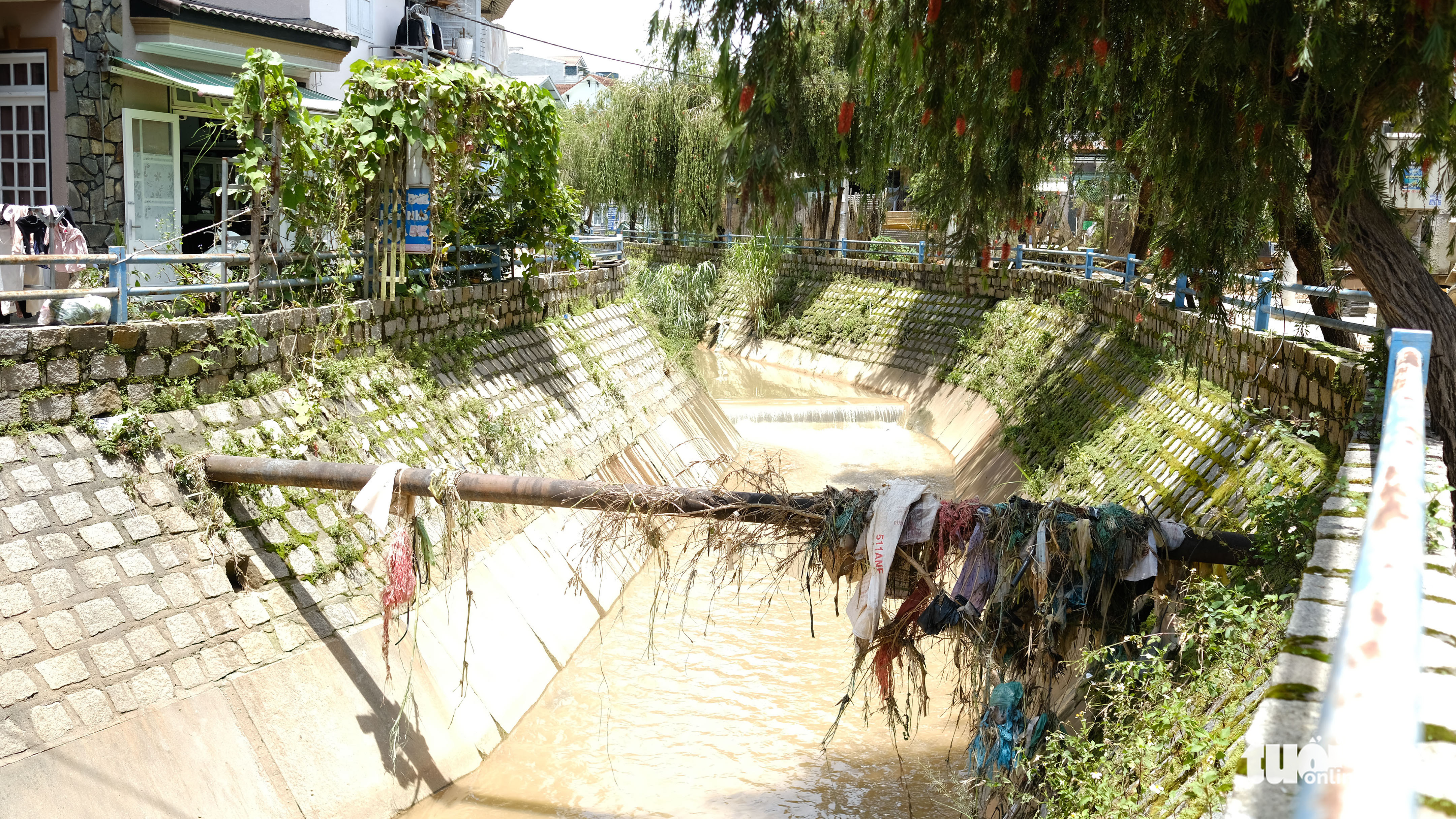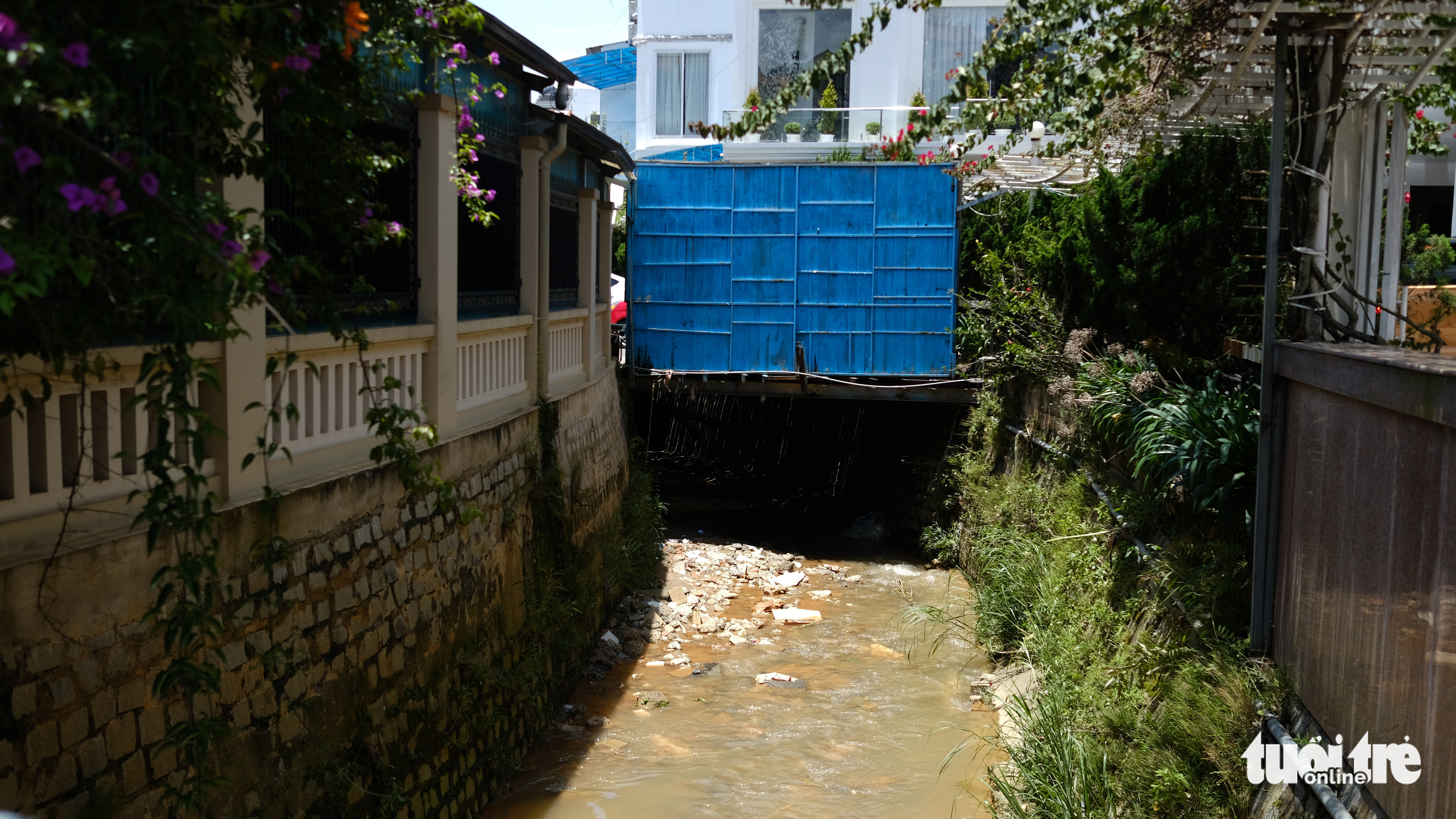Many experts attributed the recent flooding in Vietnam’s Da Lat City, which shocked both residents and visitors, to the increasing numbers of greenhouses, construction works, and garbage.
A downpour lashed Da Lat City in the Central Highland province of Lam Dong on Thursday afternoon, causing Cam Ly stream to overflow and submerging many nearby streets.
Although the flooding lasted only about 30 minutes, the rainwater rose too fast for local residents and tourists to react.
The Da Lat People’s Committee said that the city was partially flooded in a short time, citing problems related to greenhouses and drainage systems, which local authorities have been trying to deal with.
|
|
| Local residents remove garbage from a drain along Cam Ly stream in Da Lat City, Lam Dong Province, Vietnam, September 1, 2022. Photo: M.Vinh / Tuoi Tre |
Many experts believed that the large number of net houses and greenhouses, as well as the increase of concrete in the inner city have reduced the permeability of soil.
The increasing frequency of flooding in the city has something to do with the rapid expansion of agricultural production and greenhouses, especially along Cam Ly, a 70-kilometer stream flowing through Da Lat.
Statistics from the Lam Dong Department of Agriculture and Rural Development show that Da Lat has about 18,000 hectares of land for flower and vegetable production, of which greenhouses and net houses cover 10,000 hectares.
Most of the greenhouses are located along Cam Ly stream.
|
|
| Rubbish is removed from Cam Ly stream in Da Lat City, Lam Dong Province, Vietnam. Photo: M.Vinh / Tuoi Tre |
“In theory, the soil in areas with greenhouses has zero ability to absorb water, which means that all of the rainwater will pour into the stream,” said Nguyen Mong Sinh, former president of the Lam Dong Union of Science and Technology Associations.
Tuoi Tre (Youth) newspaper reporters also noticed that many residents tend to dump garbage into Cam Ly.
Phan Cong Ngon, a former irrigation official, previously voiced his concern about the pressure of domestic and agricultural waste on the drainage capacity of the stream.
|
|
| Construction works along Cam Ly stream in Da Lat City, Lam Dong Province, Vietnam. Photo: M.Vinh / Tuoi Tre |
Meanwhile, Lam Ngoc Tuan, former environmental studies lecturer at Da Lat University, the increase of concrete houses and buildings has a negative impact on the city’s drainage system.
Da Lat was originally planned for about 20,000 people, but the local population is now more than 200,000.
If visitors are taken into account, the number of people in the city can reach 300,000, Tuan elaborated.
Da Lat’s drainage system was previously renovated, but it is still not enough for the current volume of concrete in the city, he added.
|
|
| A house is being built in Da Lat City, Lam Dong Province, Vietnam. Photo: M.Vinh / Tuoi Tre |
|
|
| Garbage along a section of Cam Ly stream in Da Lat City, Lam Dong Province, Vietnam. Photo: M.Vinh / Tuoi Tre |
|
|
| Garbage along a section of Cam Ly stream in Da Lat City, Lam Dong Province, Vietnam. Photo: M.Vinh / Tuoi Tre |
|
|
| Garbage along a section of Cam Ly stream in Da Lat City, Lam Dong Province, Vietnam. Photo: M.Vinh / Tuoi Tre |
Like us on Facebook or follow us on Twitter to get the latest news about Vietnam!



